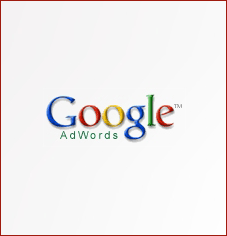
If you offer a great product, have good marketing on your website, and your prices are reasonable, Pay-Per-Click is one of the best investments you will ever make. That is, if the person who takes care of your campaign knows what he is doing. This is the same step by step system that we use to manage our clients’ Pay-Per-Click campaigns.
Step 1: Determine Your Goal
Is your goal getting visitors to fill out a contact form, place an order online, or download your white paper? Set up a goal using Google Analytics and make sure that it is linked to your Google AdWords account.
Step 2: Choose the Initial Keywords
Do some brainstorming to come up with some keywords. After you are done, you can use a keyword suggestion tool such as WordTracker to get more related keywords.
Make sure that you get both broad and long-tail keywords. Examples of broad keywords: leather handbag, suede shoes, Louis Vuitton wallet. Examples of long-tail keywords: black genuine leather handbag, buy suede shoes in Scottsdale, Louis Vuitton wallet model X123.
If you want, you can use PPC Keyword Generator to combine lists of keywords.
Step 3: Set Up Your Account
Create a new campaign targeting the market that you are interested in. Don’t choose to show your ads worldwide if you just sell to the US market. Then set up your daily budget.
Create one ad group for each keyword and have the three versions of that keyword in the ad group (broad, exact, and phrase). Use the Google AdWords Editor free tool; it will make your life easier.
Step 4: Start Bidding High
Google takes two factors into consideration when it comes to choosing what position your ad will be at. The first one is your bid price (how much you are willing to pay for each click that you get). The second one is your CTR (Click-Through-Rate). The CTR is the number of times your ad is clicked for every 100 times that it is shown.
One of the main mistakes that most rookies make is starting with a very low bid, sometimes $0.05 or $0.10. When you bid is so low your ad shows at the bottom of the page, or on the second or third pages. Nobody clicks on them so Google says “if no-one clicks on this ad, we will show it less often”. And that is how your campaign goes down.
Start bidding high. That way your ad will show between positions 2 and 7, you will get a good CTR, and then you can lower the bids a little and still get a lot of clicks.
Now, in order to bid high, you need to figure out how much you can afford bidding. This is how you do it:
Find out what is the average value per conversion. For example, let’s say that you sell diamond rings and the average order is $2,000. Now, let’s assume that the gross profit margin is 50%. Therefore, your average order profit is $1,000. Let’s say you have a conversion rate of 1% (which means that 1 out of 100 visitors becomes a paying customer). So for every 100 visitors you make $1,000. That means that your average profit per visitor is $10.
You can now figure out how much you want to invest to get a visitor depending on your business model. In this case, it would definitely make sense to pay up to $9.99 per visitor if you are getting $10 in return (for the sake of simplicity I am not considering fixed costs, reserves, taxes, insurance, etc.) Some companies will be happy to break even or lose money to acquire a new customer if they know that the lifetime value of a new customer is a lot higher than $10. Let’s assume that 1 out of 4 people who buy engagement rings from you also buy your wedding rings. In that case you will be willing to spend a lot more than $10 per click. Just do the math and figure out what is the maximum you are willing to bid. That will help you get a high CTR and then you can lower your bids a little if you want.
Step 5: Write Great Ads
Some people say that you have to include the keywords in the headline, write a benefit in the first line and features in the second line. I believe that is a great starting point but the key is split-testing. You always have to run two different versions of the ad, pick the winner, and write another ad to beat the original one. If you are always split-testing in a couple of months you will have ads with amazing CTRs.
Step 6: Measure and Adjust
There is one metric that is more important than all the others: conversion rate (that is assuming that the different keywords bring in a similar profit). Don’t optimize your campaign for CTR. That is a big mistake. You want to pay for sales or leads, not clicks.
Use Google Analytics to see what keywords are converting, what keywords aren’t, and tweak your campaign to boost conversions.
If you need help getting massive qualified traffic to your website and boost your sales through a Pay-Per-Click campaign, let us know; we can definitely help.


